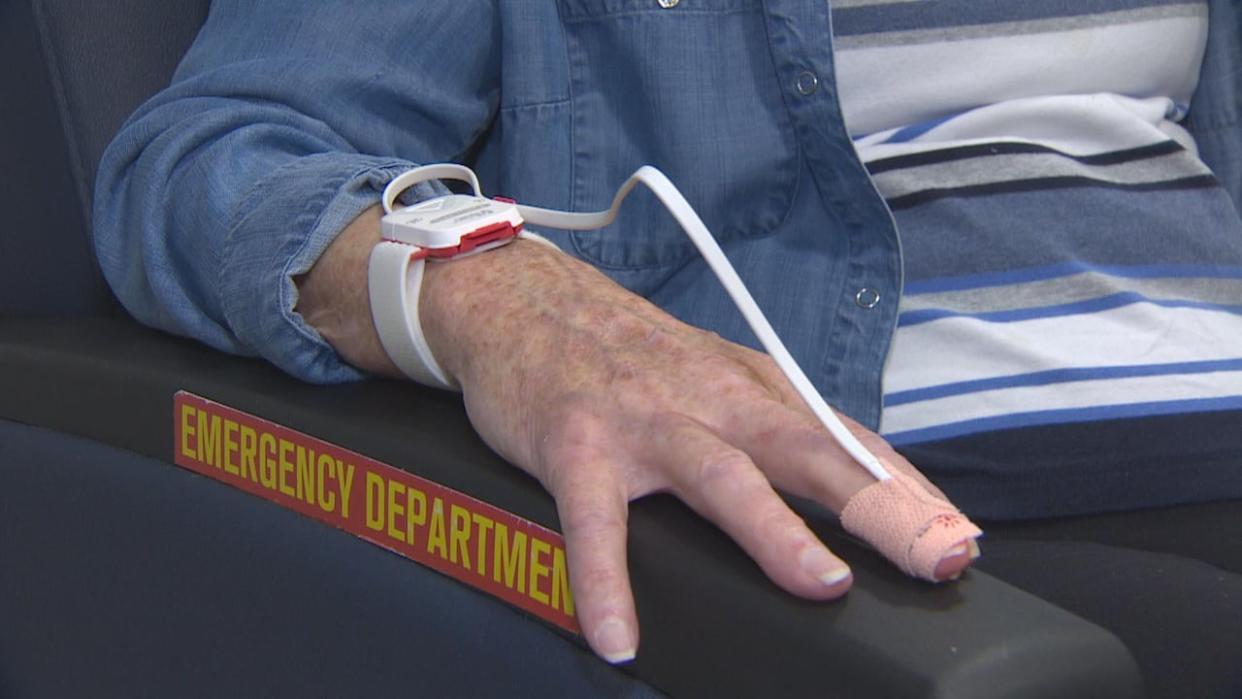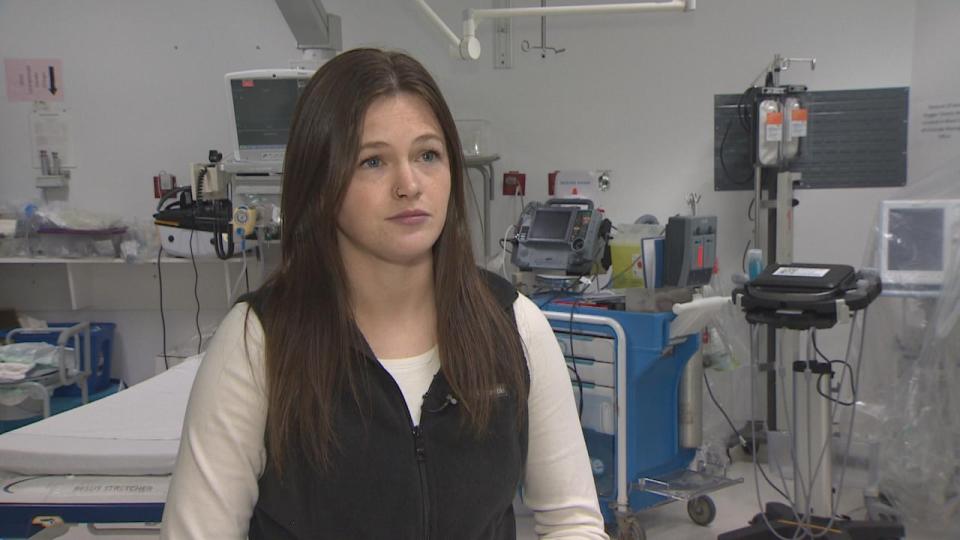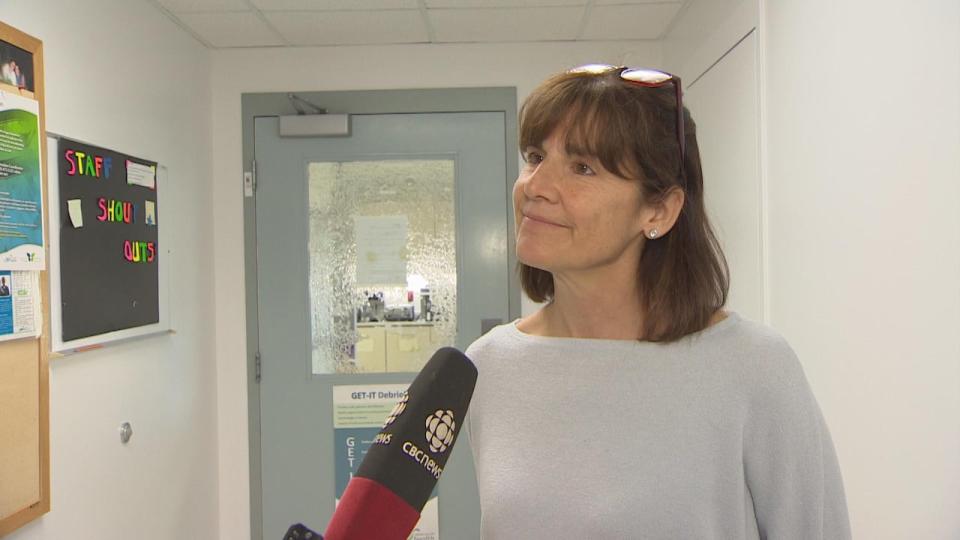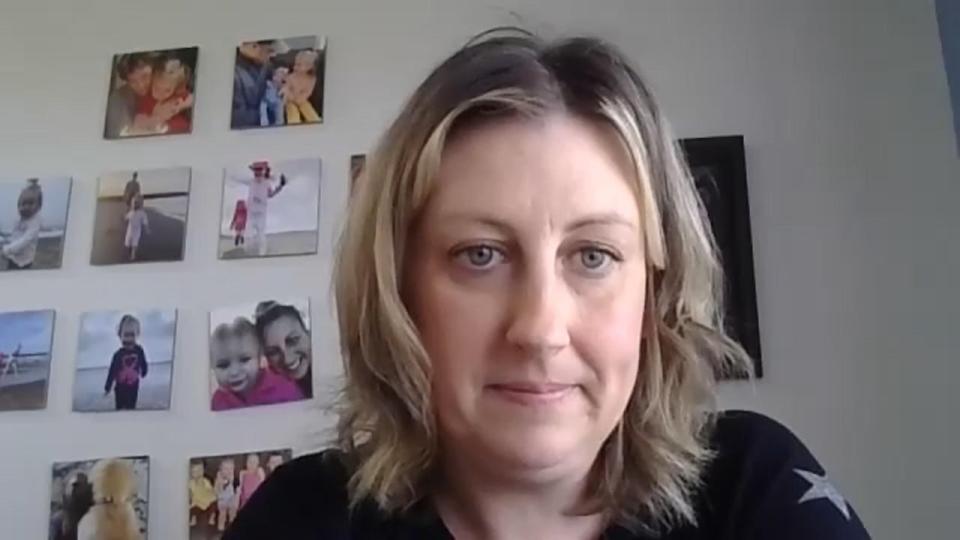Pilot project monitors patients while they wait in Dartmouth ER

Patients waiting at an emergency department in Dartmouth, N.S., with symptoms including chest pain, severe bleeding or trouble breathing are now being given a portable device that allows nurses to monitor their pulse and oxygen levels.
It's part of a pilot project that started in January. The device, a pulse oximeter, is wirelessly connected to a monitor that tracks vital signs.
Nurse Julie Canning, one of the people who keeps an eye on the data coming from the devices, said it has allowed them to catch heart-rate abnormalities.
"If we have them on this monitor — let's say for about five hours, and a doctor doesn't see them until about hour six — we're able to go back to hour three and see if there were any funky arrhythmias that we may have caught," said Canning.
In Canning's role as a waiting room care provider, she assists the triage nurse by reassessing patients. The position started in 2022 and has now expanded to a team of two nurses.

Julie Canning has been working as a nurse at Dartmouth General for four years and received training in November for the pilot project. (Brian MacKay/CBC)
Before, the nurse in the position would have to go into the waiting room and measure a patient's vitals. They now have the option of putting the pulse oximeter on someone and gathering continuous data that can be shared with a doctor.
The pilot program is part of the hospital's strategy to deal with the widespread problem of long waits for emergency care.

Lori Sanderson says there’s potential for more technology to be introduced in the future in other hospital waiting and inpatient areas. (Brian MacKay/CBC)
"It's no secret that we have overcrowding in our emergency departments and our patients wait an extended period of time in our waiting rooms. So this project is looking at trying to increase safety while our patients wait." said Lori Sanderson, health services director at Dartmouth General.

Katherine Snow hopes the pilot project makes a difference. (CBC)
Katherine Snow lost her mother-in-law Charlene Snow in December 2022, after she returned home from a seven-hour wait at Cape Breton Regional Hospital. Charlene Snow was experiencing jaw pain and flu-like symptoms, and decided to go home and try a walk-in clinic the next day. She died an hour and a half later due to a heart attack.
After her mother-in-law's death, Katherine Snow created a website sharing Charlene's story and the stories of other patients and healthcare workers in Nova Scotia.
Snow said she's encouraged hearing about the new project.
"We'll never know if reassessment would have saved Charlene's life or a monitor like this [would have made a difference] but knowing someone else could be helped is also a very encouraging thing for us."
The wearables in waiting rooms pilot project is the result of an innovation fund that each year gives the hospital $100,000. Staff pitched the idea and the hospital's board approved it.
Nova Scotia Health said if the pilot is successful, there's potential for the project to expand to other hospitals in the province.
MORE TOP STORIES

